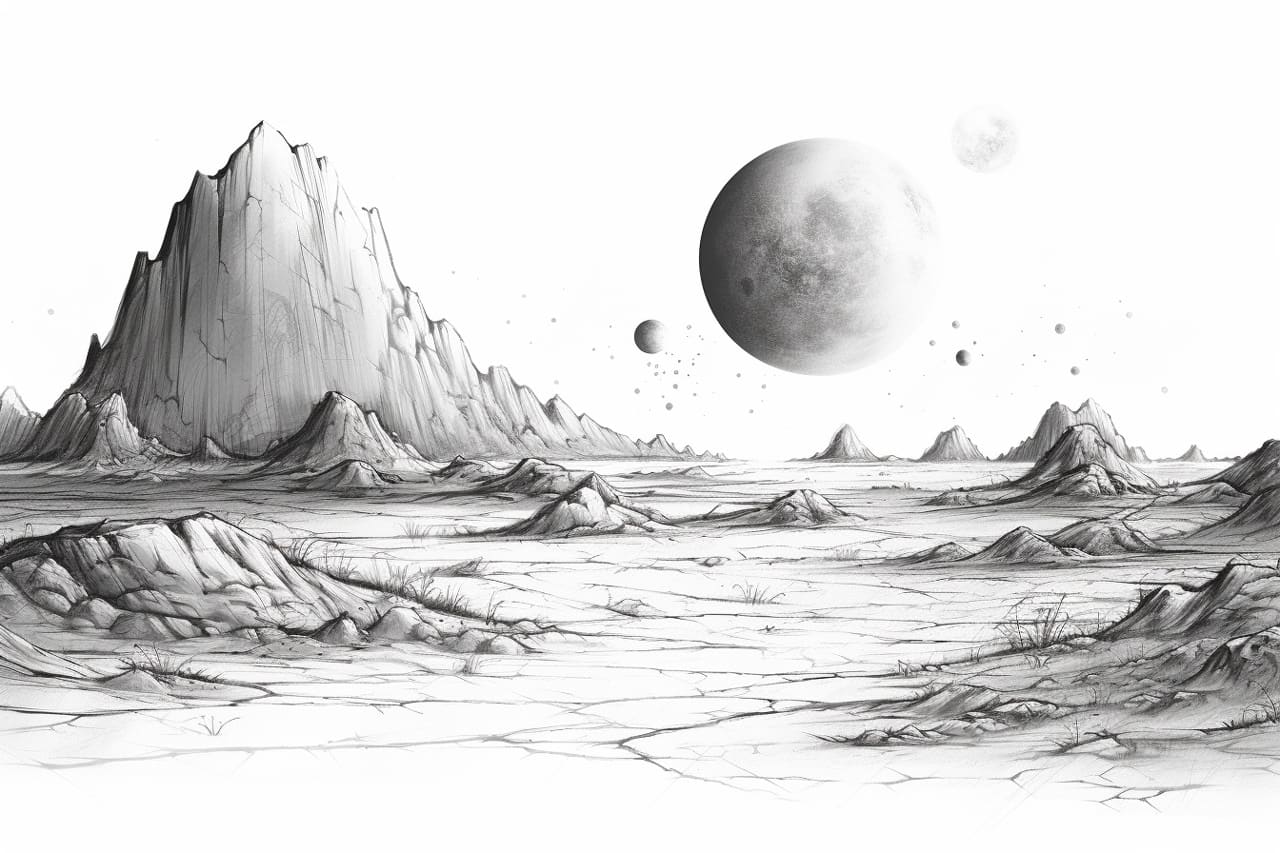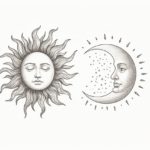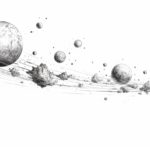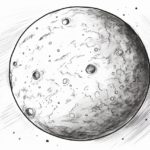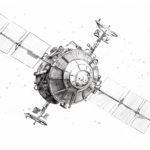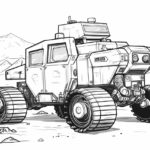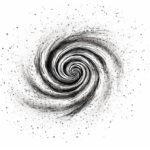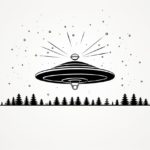Welcome to the fascinating world of drawing lunar landscapes! In this artistic journey, we will explore the enigmatic beauty of the moon’s surface and learn how to capture its mystical allure on paper. From the rugged mountains and vast plains to the deep craters and intricate patterns of lunar soil, drawing lunar landscapes offers a unique opportunity to unleash your creativity and imagination. Join me as we delve into the techniques and nuances of lunar drawing, and discover how to bring this celestial world to life through your art. Let’s embark on this lunar adventure together and unlock the secrets of creating captivating lunar landscapes on paper!
Materials Required
To draw a Lunar Landscape, you will need the following materials:
- Drawing paper or sketchbook
- Pencils (graphite pencils of various hardness for shading)
- Eraser (preferably a kneaded eraser for easy manipulation)
- Blending tools (such as blending stumps or tortillons)
- Charcoal pencils or sticks (optional for adding darker tones)
- White gel pen or white colored pencil (for adding highlights)
- Reference images of the moon or lunar landscapes for inspiration and accuracy
These materials will help you capture the unique textures and lighting of a Lunar Landscape.
How to Draw a Lunar Landscape: a Step-by-step Guide
Step 1: Gather Your Materials
Before starting to draw your lunar landscape, make sure you have all the necessary materials handy. You will need drawing paper, a pencil, an eraser, a blending stump, and any additional materials you may want to use, such as charcoal or pastels.
Step 2: Set Up Your Workspace
Find a comfortable and well-lit area to work on your drawing. Ensure you have enough space to lay out your materials and move your arms freely while drawing.
Step 3: Sketch the Horizon Line
Begin by lightly sketching a horizontal line across your paper to represent the horizon of the lunar landscape. This line will help you establish the perspective and depth of your drawing.
Step 4: Add Lunar Features
Start adding lunar features such as craters, mountains, and rocky terrain to your landscape. Use reference images of the moon to guide you in creating realistic shapes and textures. Pay attention to the placement and size of each feature.
Step 5: Shade and Texture
Use your pencil to start shading in the various elements of your lunar landscape. Pay attention to the light source and create areas of light and shadow to give your drawing depth and dimension. Experiment with different shading techniques such as hatching, cross-hatching, and stippling to create textures.
Step 6: Blend and Refine
Use a blending stump or your fingers to blend the shading and create smooth transitions between light and dark areas. Take your time to refine the details of your lunar landscape, adding more texture and depth where needed.
Step 7: Final Touches
Once you are satisfied with the overall look of your lunar landscape, take a step back and assess if any final touches are needed. Make any necessary adjustments to enhance the realism and impact of your drawing.
Step 8: Sign and Date
Finally, sign and date your drawing to mark its completion. Admire your work and consider sharing it with others or incorporating it into a larger art project.
Conclusion
Congratulations on creating a beautiful Lunar Landscape drawing! Your attention to detail and creativity have truly brought this otherworldly scene to life. Remember, art is a journey of continuous growth and exploration, so keep practicing and experimenting with different techniques. Your passion and dedication to your craft will surely lead to even more stunning creations in the future. Keep up the great work and never stop creating!
Fun Facts About Lunar Landscapes
- The Moon has no atmosphere, which means there is no weathering or erosion like on Earth. This results in lunar landscapes preserving craters and other features for millions of years.
- The Moon is home to the largest impact crater in our solar system, the South Pole-Aitken basin, which is over 2,500 kilometers wide and 13 kilometers deep.
- The Moon has a variety of unique geological features, including rilles (long, winding depressions), domes (rounded hills), and lava tubes (tunnels formed by flowing lava).
- Lunar soil, also known as regolith, is made up of fine dust and rocky debris. It is very different from Earth soil and can be sharp and abrasive.
- The Moon experiences “moonquakes,” which are seismic activities caused by the gravitational pull of Earth and the cooling of the Moon’s interior.
- The Moon’s surface is covered in dark, basaltic plains called maria, which were formed by ancient volcanic activity.
- The Moon has extreme temperature variations, ranging from over 100°C during the day to below -100°C at night.
- The Moon has a very low gravity compared to Earth, which affects the way objects move and behave on its surface. Astronauts can jump higher and objects weigh less on the Moon.
- The Moon is constantly bombarded by meteoroids and micrometeoroids, which create new craters and change the lunar landscape over time.
- The shadows on the Moon can be very long and dramatic due to the lack of atmosphere, creating stunning visual effects during lunar sunrises and sunsets.
Suggestions for Scenes and Settings for Lunar Landscape Drawings
Sure! Here are some specific suggestions for scenes and settings for drawings of Lunar Landscapes:
- Crater landscape: Illustrate a vast lunar landscape filled with craters of various sizes, some with sharp edges and others more weathered. Include shadows to add depth and dimension to the scene.
- Lunar base: Depict a futuristic lunar base with domed structures, solar panels, and astronauts in space suits working on experiments or repairs. Show Earth in the sky to emphasize the setting.
- Lunar mountains: Draw towering lunar mountains in the distance, with jagged peaks and deep shadows emphasizing the stark and barren landscape. Include a lunar rover or astronaut exploring the area for scale.
- Lunar cave: Create a scene inside a dark lunar cave, with eerie blue light filtering in from the entrance. Show stalactites and stalagmites, and perhaps a mysterious alien artifact hidden in the shadows.
- Lunar rover exploration: Illustrate a lunar rover traversing the rugged lunar terrain, kicking up dust as it moves. Include Earth rising in the background to highlight the desolate beauty of the lunar landscape.
- Lunar eclipse: Capture the moment of a lunar eclipse on the moon, with Earth partially obscuring the sun’s light, casting a reddish glow over the lunar surface. Show stars twinkling in the dark sky for added drama.
- Lunar colony: Imagine a bustling lunar colony with futuristic buildings, greenhouses, and a network of underground tunnels for protection from radiation. Include a diverse group of inhabitants going about their daily lives.
- Lunar mining operation: Depict a scene of lunar mining operations, with robotic vehicles extracting resources from the moon’s surface. Show a harsh industrial landscape contrasting with the serene beauty of the lunar environment.
- Lunar garden: Create a whimsical scene of a lunar garden, with alien plant life thriving in the low gravity and harsh conditions. Include

